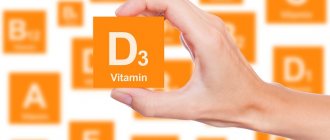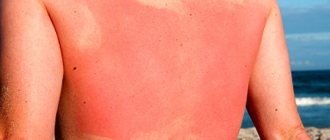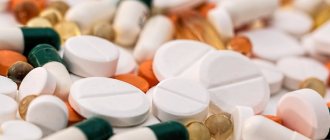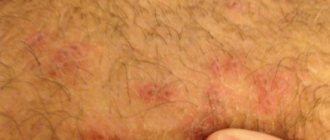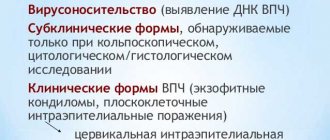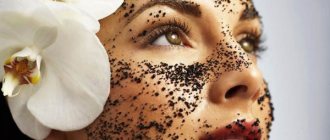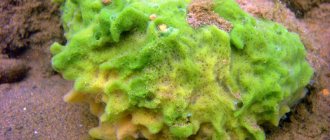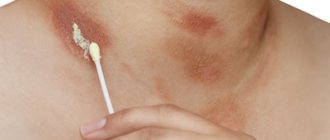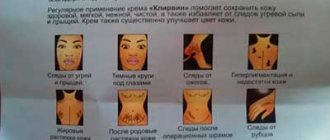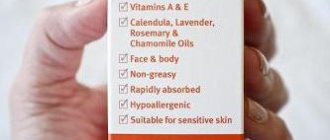Description
A person faces various types of trauma throughout his life, starting from childhood.
Before treating a lesion, you need to know everything about this type of injury. The damage is a violation of tissue trophism, which can be localized in various parts of the body. Weeping damage can cover different areas and depths of penetration. There are several phases in it:
- inflammatory process;
- regeneration;
- scarring.
Restoration and healing of weeping type wounds should be carried out according to the scheme. It is necessary to constantly bandage the open wound, use restorative and disinfecting medications.
Symptoms
Depending on the area and depth of the burn lesion, the victim may experience both local symptoms and general symptoms.
Local symptoms
As a rule, burns of degrees I-IIIA, occupying up to 10% of the skin, or degrees IIIB-IV - up to 5-6%, are manifested by local symptoms, and there is generally no impairment of body functions. The exceptions are such categories of victims as children, elderly and senile people, people suffering from severe somatic pathology - their general symptoms appear in a lesion area almost half that of healthy people.
Local signs of a burn depend on its degree and are either an area of hyperemia (redness) of the skin and slight swelling, or small blisters with a red erosive surface underneath, or large blisters with a tendency to merge, at the site of the opening of which a motley surface is determined, or areas of tissue necrosis (death) - skin, subcutaneous fat, muscles and bones.
Sometimes, especially with widespread deep processes, complications develop:
- inflammation of regional lymph nodes – lymphadenitis;
- abscess;
- gangrene;
- purulent cellulite.
Symptoms of the general process
The functions of organs and systems of the body are disrupted if there are extensive and deep burn lesions - this condition is called “burn disease”. It occurs in several stages:
- I – burn shock (is the result of severe pain and loss of a large amount of fluid through the burn surface; life-threatening for the victim; lasts from 12 hours to 3 days; in the first minutes after the burn the patient is excited, but this state is soon replaced by lethargy; the victim thirsty, muscle tremors are detected, he is shivering; confusion or even complete loss of consciousness is characteristic; blood pressure is either slightly elevated or within normal values; pulse is increased, the volume of urine excreted is reduced, it acquires a brown, black or cherry hue and a burning smell );
- II - burn toxemia (this condition develops when the decay products of necrotic tissues and bacterial toxins are absorbed into the blood - usually this occurs 48-96 hours after the injury and lasts up to 10-14 days; the patient’s confusion is determined, he is excited, his temperature body is increased; convulsions, hallucinations (both auditory and visual), delusions may develop; complications from the digestive tract (erosions, ulcers, gastric bleeding, intestinal obstruction, pancreatitis, hepatitis and others), cardiovascular (thrombosis) also appear , toxic myocarditis and pericarditis), urinary (nephritis, pyelitis) and respiratory (bronchitis, pneumonia, pleurisy, pulmonary edema) systems);
- III – septicotoxemia (is a consequence of the loss of a large amount of protein through the burn surface, as well as the reaction of the whole organism to the associated infection; this stage lasts from 2 weeks to 2 months or more; symptoms of septicotoxemia are extensive wounds in which a large amount of purulent content is detected; burns do not heal, and the recovery process that began earlier regresses; the affected person is very weak, lethargic, has no appetite, sleep is disturbed and sharp fluctuations in body temperature are noted; body weight also decreases; atrophic processes in the muscles progress, mobility in the joints and in places of contact of the body decreases bedsores appear on the surface of the bed; soon severe infectious complications develop and the patient dies).
With timely provision of adequate medical care and satisfactory resistance of the victim’s body to infections, the burn disease can be overcome and the patient recovers.
General actions
If a person experiences pain and the damage covers a large area, it is necessary to quickly go to the hospital. When providing first aid, you must adhere to the following procedure:
- First, remove clothing from the damaged area. If the material sticks to the wound, it is not torn off. It is enough to carefully trim around the edges. You can wash the injury with a solution of potassium permanganate.
- Next, the wound is cooled. This is done to prevent the penetration of the damaging factor into adjacent layers of the skin and to reduce pain. Do this under running cool water. It is not recommended to do this with ice or frozen foods, as this can lead to the development of local frostbite. The procedure should last no more than 30 minutes.
- When exposed to aggressive chemicals, it is necessary to neutralize their effect. If the injury is caused by exposure to acids, then a soda solution is suitable; if it is alkaline, a vinegar solution is suitable.
- After minor burns, healing occurs quickly. If the injury occupies a large area of the body, then apply sterile tissue. You should also consult a doctor. With timely medical care, tissue regeneration occurs quickly and without significant complications.
What to do if the skin peels off after a burn: first aid
Before starting treatment, you need to make sure that high temperatures or chemicals are no longer negatively affecting the skin. To do this, you need to remove clothing from the damaged part of the body and thoroughly rinse the wound with cold running water. If there is no water, then apply ice or snow.
If the area is very large or the degree of the burn is so severe that the victim cannot provide first aid to himself, you need to call an ambulance, wash the wound and wrap him in a clean cloth.
For minor wounds, you can give yourself first aid yourself.
- After washing the wound, you need to treat it with products that are designed to regenerate the skin. Olazol, Furaplast, and Panthenol, which is available in spray form, are well suited.
- With a severe burn, the skin peels off and a wound appears, which can become infected. Therefore, you need to apply a sterile bandage. Gel wipes should be placed under it to help restore the skin: GelePran, LitA-Tsvet-1. The dressing should be changed depending on the duration of action of the napkin: from 1 to 2.5 days.
- If there are no special preparations at hand, you need to treat the wound with any antiseptic that does not contain ethyl alcohol. Miramistin, a solution of furatsilin or potassium permanganate are suitable.
- In case of pain, you need to take a painkiller, for example, Analgin, Ketanov, Paracetamol.
After proper treatment of the wound, the affected skin begins to gradually recover. If your general health worsens, you should definitely consult a doctor.
Burn treatment
A weeping burn must be treated carefully. In order to reduce the risk of adverse events, it is necessary to thoroughly rinse the injured areas. Carefully remove dust, dirt and pus. A disinfectant medication is applied to damaged tissue. For this manipulation, antibacterial agents such as betadine are used.
Hydrogen peroxide has a good effect. If this solution is not available, then soapy water can be used. The skin around the injury site is lubricated with alcohol solutions of brilliant green or iodine. This is done to dry the edges of the damage and prevent infection. The next step is to protect the wound from pathogenic flora.
Wet-type injuries have the following periods: the stage of inflammation, recovery and scarring.
So how to treat weeping wounds after a burn? During the inflammatory process, antiseptics are applied to the wound. You can use any available one. After this manipulation, it is necessary to apply a bandage made of sterile material, which will prevent the entry of moisture.
The fluid that flows from the affected area helps restore the wound and speeds up the healing process. During this period, it is necessary to change the dressing as often as possible. If excess moisture is released, then healing is carried out using the open method. For areas of the body where fluid production is highest, hygroscopic dressings are used.
During dressing it is necessary to treat with special means. Antibacterial drugs or alcohol-based products can only be used after being prescribed by a specialist.
If there is severe pain, then it is necessary to take analgesics. This can be in tablet form, injection solutions or special aerosols that are most convenient to apply.
During the purulent-necrotic period, agents with antibacterial activity are applied under the bandage. But you cannot use ordinary ointments with antibiotics for this; they do not cope with cleansing the wound. It is better to give preference to water-based ointments, such as Levosin or Levomekol.
At the second stage, when the inflammation process has already passed, and the lesion is clean and the tissues have been restored, special burn patches are applied to the site of injury. It is impregnated with medicinal preparations, which, upon contact with the skin under the influence of heat, transform into a gel structure and have a therapeutic effect.
In the third period, Solcoseryl is applied under the gauze. This helps speed up the recovery process and scar formation.
As part of complex therapy, vitamin and mineral complexes must be prescribed. Essential substances such as vitamin A, C and E help produce collagen and start the healing process.
It is better to entrust the choice of drug to a doctor. The following are the most effective drugs.
Solcoseryl is one of the most effective medications for healing the skin. It is most often prescribed by doctors for burns. The formula of the medication includes active components that nourish the skin, help deliver oxygen to cells and regenerate cells. Solcoseryl is available in the form of a gel or ointment. For weeping wounds, it is better to use a gel consistency.
Lioxazine is a high-tech medicine that provides pain relief after injury. It is able to accelerate regeneration processes and prevent the penetration of microorganisms into the wound.
Amprovisol is a medicine in the form of an aerosol. It is very convenient to use for burns, since there is no need to contact the affected area. This remedy helps relieve inflammation in burns, disinfect and anesthetize the wound. Also ensures quick recovery.
Olazol is a local drug with a healing effect. Available in aerosol form. Contains sea buckthorn fruit oil. Due to the antimicrobial, analgesic effect, the process of epithelial restoration is significantly accelerated.
Traditional methods
Potatoes Young root vegetables are peeled, grated on a coarse grater, and squeezed using gauze. This juice is moistened with a clean dressing material and applied to the wound. The dressing is changed 4 times a day.
Onions The onions must be grated on a fine grater, then the mixture is applied to a bandage and applied to the damaged area. With the help of an onion, the injury site is disinfected, the severity of pain is reduced and swelling is neutralized.
Aloe juice You can squeeze the juice from the leaves of the plant or tear off the skin. The fabric is blotted with liquid and applied to the injury site. When using a whole sheet, it is attached to the wound for several hours.
Sea buckthorn Oil from the fruit of sea buckthorn is an excellent remedy, but before using it to treat a burn it must be sterilized. I apply wipes moistened with this product to the wound. It is better to perform this manipulation once a day.
To treat the wound, prepare a decoction or infusion of water. Take a dry plant and fill it with water, leaving it for several days. Moisten the bandage with this solution.
You can carry out these activities yourself only if the injury is not life-threatening. Before using various remedies, it is important to consult a doctor. The best way to prevent injury is to follow safety precautions and follow all precautionary rules.
Injury from boiling water, steam, hot water, or hot kitchen utensils is a common household injury, in a fifth of cases children suffer - an electric kettle boils on the table, the child pulls the cord and knocks it over. What to do if you are scalded, what first aid to provide? Timely actions will help avoid long-term treatment.
When scalding with boiling water, grated raw potatoes help:
- Place the paste, apply it to the affected area, and secure with a bandage.
Replace as soon as the mixture warms up.
For a thermal burn, first aid is provided by a leaf of fresh cabbage:
- Attach the sheet to the affected area.
After a few minutes, the pain disappears or is significantly reduced, and after another half hour it completely disappears. Cabbage leaf is also effective for bruises and sprains.
Heat damage is treated with potato starch:
- Sprinkle the scalded area with a thick layer, cover with cotton wool, and bandage loosely.
Aloe vera helps cure burns:
- Cut the skin off the leaf and place it on the affected area for 12 hours.
- Grind the leaf into a paste, apply to the affected area, secure with a sterile bandage.
What to do if the skin peels off after a burn? If the area of the lesion allows it to be treated at home (the size of the wound should not exceed the size of one palm of the victim), then the best way to speed up the healing of the skin is to alternate open and closed methods of local treatment.
Methods for preventing chemical burns
- Important! Never place chemicals where children can reach them and do not pour them into bottles from brands familiar to children, such as Coca-Cola or Sprite. Hoping to drink a little sweet soda, children get a deep burn not only to the oral cavity, but also to the entire gastrointestinal tract.
- Also, do not leave batteries in sight, within the reach of children. When it is swallowed, under the influence of hydrochloric acid of the stomach, the battery depressurizes and releases a huge amount of alkali, which in just a couple of hours causes deep ulcers, even perforation of the stomach. And under no circumstances try to neutralize the reaction with any acid. This will cause even bigger problems.
- Read the instructions! It's not shameful or disgraceful.
- Work with chemicals, taking into account safety precautions: wearing gloves, protective suit, goggles. If necessary, then wear a respirator.
- Do not wear clothing made from synthetic, flammable fabrics when working with chemicals.
Pharmacy products
In case of a 1st or 2nd degree burn with boiling water, first aid is provided with Panthenol, Olazol, and Solcoseryl ointment.
Panthenol is used to treat skin damage - thermal burns, including sunburn, as well as abrasions and cracks.
Olazol anesthetizes, inhibits the growth and reproduction of microorganisms, improves and accelerates healing.
Solcoseryl gel or ointment is used to help after scalding with boiling water, to treat thermal injuries, and also if you happen to get sunburned.
The most convenient remedies for burns are in aerosol packaging.
Anti-burn gel wipes cool, anesthetize and localize the lesion, destroy microbes, and are easy to remove when replacing.
When providing first aid, it is forbidden to cover the burned area with an adhesive plaster - it will be painful to peel it off later.
For pain relief, take Analgin.
If the skin peels off, treat the affected area with a non-alcoholic antiseptic solution and cover the wound with a sterile bandage or gel pad.
So what can you use to anoint a burn? Currently, the pharmacy offers an abundance of anti-burn drugs of any composition and produced form. They differ from each other in some characteristics.
Aerosol
This dosage form is effective for providing first aid. These remedies are used for first-degree lesions, when the integrity of the epidermis is preserved. The aerosol helps relieve pain, swelling and redness. This form helps to apply the drug to the wound without touching the skin.
The bottle with the product is shaken and sprayed from a distance of 15 cm onto the burn field, the bottle must be in a vertical position.
They can be of a simple composition or contain foaming agents that envelop the entire wound.
These medications have a delicate texture and do not contain fatty substances; they quickly penetrate into the layers of the skin, relieving the symptoms of damage. Helps quickly relieve swelling.
Gels are not used for the regeneration of deep damage. They are suitable only for mild lesions.
This dosage form is characterized by a more viscous consistency than the gel. Ointments are used for stage 1 and 2 injuries and in later stages of treatment of severe wounds. Doctors and specialists recommend making compresses based on them.
Napkins
Used to provide first aid. They are impregnated with a composition that relieves pain. The advantages of these products include ease of use. They are applied to the burned skin until a team of specialists arrives.
What ointments should I use? Panthenol and its derivatives are considered the most effective drugs at the moment. They do not cause side effects and are quite effective. These products help speed up tissue repair processes. Similar preparations based on panthenol include: Dexpanthenol, D-panthenol, Bepanten, etc.
- Levovinisol and Vinizol. The mechanism of action of these drugs is similar, but Levovinisole may cause more unwanted effects. The frequency of their use depends on the severity of the lesion;
- Plant-based cream "La-Cri". The composition of the medicine includes natural extracts. The formula of the drug does not include antibiotics or hormones, and this indicates the safety of the product;
- Oxycyclosol contains anti-inflammatory hormones and antibiotics. Therefore, it is used carefully and under the supervision of a specialist;
- In complex therapy, drugs with antimicrobial activity are also often used, for example, Synthomycin liniment or Levomycitin gel. These remedies are necessary to treat extensive damage.
If the injury is caused by the action of a chemical substance, then its nature is first identified and neutralized. Only after this can these medications be used.
The following remedies will help quickly cure first and second degree burns:
- Ointments and aerosols based on dexpanthenol - heal and restore the epidermis well. Their presence is especially desirable in a home medicine cabinet when there are small children in the family. Panthenol spray, Panthenol cream foam, Bepanten ointment.
- Other wound-healing and anti-inflammatory ointments, solutions, creams and gels - they are usually used after the pain has subsided and the first acute symptoms have eliminated. Solcoseryl, Levomekol, La-Cri, Rescuer, Furaplast, Povidone-iodine, Apollo, Ozhogov.Net, Radevit.
- Antiseptic drugs - reduce the risk of wound infection, which is especially important when in contact with dirty hot objects or boiling water. Furacilin, Chlorhexidine, Miramistin spray, Olazol.
- Anti-burn wipes and bandages are impregnated with a special composition with an antiseptic and anesthetic effect. They are convenient to take with you into the field and use until the ambulance arrives or the victim is delivered to the first aid station.
To avoid infection, the skin around the burn can be treated with a weak solution of manganese or hydrogen peroxide, and then gently lubricated with iodine or brilliant green.
Complications
A complication is considered severe if there is a process of development of burn disease. This state is a response to a painful stimulus. Burn disease is formed:
- When more than thirty percent of the body area of an adult patient is affected and twenty percent in children. 1st degree.
- When more than twenty percent of the body area is affected in an adult and ten percent in children. 2nd degree.
- When more than ten percent are affected in adults and five percent in children. 3-4 degree. Patients with weak immunity may suffer from this degree of severe complication even with a three percent burn to the body.
How to remove a burn with folk remedies
In order for a thermal wound to heal as quickly as possible and not leave a mark on the skin, timely correct treatment is required.
Getting rid of burns with propolis and St. John's wort:
- Cool 20g of propolis in the freezer, grate and pour a glass of medical alcohol. Leave for 10 days, stir every day, and strain when finished.
- Pour 500 ml of unrefined sunflower oil into 4 tbsp. St. John's wort flowers, leave in the sun for 14 days, stir once a day, mix with the prepared propolis tincture.
Apply the product to gauze, secure it to the wound with a bandage, change the bandage every 4 hours.
Treatment for scalding with onions:
- Finely chop the onion, mix with 20 blossoming dandelion flowers, pour in a glass of unrefined sunflower oil, simmer over low heat for twenty minutes, strain.
Lubricate the thermal wound as often as possible. Store burn ointment in a cool, dark place.
- Dissolve potassium permanganate in water to achieve a pale pink color.
Apply a gauze bandage to the burned area and periodically moisten it with the prepared solution. Replace the gauze once a day.
If the general condition of the victim is normal and the wound is not open, home remedies can be used. It is important to keep all ingredients fresh. The most effective homemade ointment recipes:
- Is it possible to put toothpaste on a burn? For minor burns, you can use menthol-based toothpaste. It will relieve swelling, reduce pain and protect against microbial infection. You can also apply a thin layer of it to the affected areas to prevent dehydration;
- Potato. Use grated pulp of this vegetable. This drug helps well and relieves inflammation. The mixture can be applied several hours after injury. Potatoes are applied to the surface of the skin and fixed with a cloth;
- Egg whites. Due to its high content of almost the entire set of amino acids, it helps in wound restoration. Use raw, gently lubricating the injury site;
- You can also use herbal infusions. To speed up healing, use a decoction of oak bark or rose hips. Decoctions are prepared using water. Take 100 ml of liquid per 1 tablespoon. Always use only fresh solution. They can be applied to burns every 30 minutes;
- Aloe juice. Thanks to its unique composition, it has a lot of beneficial effects, which is why it is actively used in the treatment of burns. The asthenia leaf is cut and the pulp is applied to the injury;
- Is it possible to apply baby cream to a burn? For mild symptoms of damage, this remedy can also be used. Baby cream can be added to honey or aloe juice, increasing its effectiveness. You can apply several times a day, being careful.
Rehabilitation
It is advisable to engage in restoration procedures earlier. There are many different physiotherapeutic methods for treating the skin after burns, which improve blood supply, promote rapid tissue regeneration, and also provide good pain relief, prevent the development of purulent complications, and remove remnants of dead skin. In addition, the treatment will perfectly help cope with scars and other problems, activate the healing of the skin flap, and more.
- Ultraviolet irradiation. Helps speed up the repair and restoration of skin tissue, activates the immune system, and removes the inflammatory process.
- Electrotherapy. This includes treatment with electrophoresis, transcranial electroanalgesia or sleep therapy and other procedures. It perfectly helps eliminate pain, normalizes blood circulation, has a bactericidal effect, and improves the process of necrotic tissue rejection. Has an anti-stress effect.
- Ultrasound therapy, phonophoresis. It has a targeted effect on the resorption of scars, normalizes blood supply processes, and, depending on the drugs used, has an analgesic effect.
- UHF therapy. Helps relieve inflammation, improves blood supply.
- Laser therapy. Promotes tissue regeneration in the red mode and has an anti-inflammatory effect. This method of UV laser irradiation of blood makes it possible to stabilize the condition of victims who have both a questionable and a favorable prognosis.
- Darsonvalization. Stimulates repair and restoration of the skin after a burn, and also has excellent preventive properties to prevent purulent inflammation.
- Magnetotherapy. It is based on a transcranial technique; it is aimed at stabilizing the patient’s emotional state. It helps improve blood circulation and activate the restoration of damaged areas.
- Photochromotherapy. If carried out using the red spectrum, a reparative effect for the skin is achieved, while green - a soothing effect.
- Aeroionotherapy. Helps increase skin permeability. The principle is the ability of ions to penetrate through affected and healthy areas of the skin and reduce pain. During this procedure, the use of analgesics enhances the therapeutic effect.
It is always necessary to treat burns in a complex manner, involving other specialists if necessary. Often patients, due to burns, are under severe psycho-emotional stress; depressive states and thoughts of suicide often accompany the disease. Therefore, the help of a psychologist is important. Currently, doctors have enough tools at their disposal to carry out successful treatment and rehabilitation that will help minimize the residual effects of a burn, allowing the patient to return to a full life.
First aid
Remove wet, hot clothing as soon as possible, as boiling water continues to burn. It is especially important to act quickly in the case of synthetic fabrics. You can cut clothes before they stick to your skin.
Remove clothes carefully to avoid blisters. It is forbidden to pierce them - this can lead to infection in the wound.
Place the scalded area under cold water or in a container with cold water. The coolness will relieve pain and slow down the spread of the burn. To reduce swelling, hold the burned area up.
When providing first aid, you can also use sheets and towels moistened with cold water for cooling.
After 15-20 minutes, dry the burn site and cover with a loose sterile bandage.
First degree lesions can be wiped with cologne and vodka. You should not use iodine or brilliant green - if you have to see a doctor, it will be more difficult for him to determine the degree of thermal damage.
Do not apply oil or fat to the burned area - the film prevents heat transfer.
What are the dangers of deep skin burns?
Minor and superficial burns from heat exposure have little potential danger. Typically, the risks are associated not with the injury itself, but with improper care, during which the wound can become infected.
With a large area of damage, the danger is:
- shock – due to loss of plasma, the blood thickens, making it difficult for the kidneys, heart, lungs and other organs to function;
- toxemia – due to the destruction of cells, dangerous toxins enter the blood.
Toxemia does not occur immediately, but only a week after the injury, which causes problems with the timely access of the patient to a doctor.
Complications can be prevented by immediately contacting a surgeon or traumatologist.
Features of using oil for burns
So is it possible to apply sunflower oil to a burn? Applying vegetable oil or any other oil to the wound site is strictly prohibited. You should also not smear it with goose fat or badger fat. Why you shouldn’t apply oily substances to a burn:
- A newly received wound is characterized by residual temperature effects, while tissue continues to be damaged. To do this, wash with cold water. When applying a substance of an oily nature, the skin temperature will increase, which will aggravate the process.
- Also, all oil-based preparations provide a medium for the development of microorganisms. When applying such a solution to a wound, infection may occur.
How to determine the area affected by burns
It is very important to correctly determine how much of the victim’s body is affected by burns, because treatment tactics and prognosis depend on this, as well as on the degree of damage. Usually, 2 rules are used for this purpose - “nines” and “palms”.
The rule of nines allows you to divide the entire surface of the human body into “nines” - 9%. So, 9% each falls on:
- neck and head;
- breast;
- stomach;
- upper limb (one);
- thigh (one);
- shin and foot.
The area of the back is 9*2 - 18%, and the remaining 1% is occupied by the perineum with the external genitalia.
According to the “rule of the palm,” the area of an adult’s palm is 1% of the surface of his body. In case of burns, they estimate by eye how many palms would fit on the scalded area and, in accordance with this number, determine the affected area.
We draw the reader's attention to the fact that the rules described above are valid only for adults - pediatric patients have different body proportions, therefore the rules of “nines” and “palms” are not applicable to them.
What not to smear
Widely used traditional medicine products are not recommended for use as primary treatment. Prohibited use:
- fat from burns of plant origin;
- kefir;
- sour cream;
- plant leaves;
- vegetable juices;
- lipids of animal origin, such as badger fat for burns.
These products are usually non-sterile as they are made at home. They can pose a risk of infection. They can be used only after completion of the main treatment or when there are no open wounds. Is it possible to apply brilliant green to a burn? This is strictly prohibited. The solution is made based on alcohol, the use of which will worsen the recovery.
What not to do
Burns from boiling water or chemical liquids are often accompanied by deep damage, and if the skin peels off and severe inflammation begins, then you should not delay treatment. Otherwise, all this can turn into a serious wound with purulent formations and abscesses.
During treatment, external agents with anti-burn and anti-inflammatory properties are used. But you still need to know what not to treat the injured area with:
- vegetable oil, ointments with a fatty base. After applying these products immediately after receiving a burn, complete heat exchange with the environment will be disrupted. As a result, the wound will not be able to cool down, it will only warm up more, and this will lead to a worsening of the condition and the development of severe inflammation;
- Do not use products containing alcohol. It dries out the tissue greatly, this will only worsen the condition and cause severe irritation;
- When the skin peels off after a burn, a weeping wound remains in its place. Its handling should be treated with the utmost care. It is not recommended to use many of the usual medications and ointments. If they are used on open wounds, this can lead to the development of serious complications;
- You can’t use brilliant green, iodine. Solutions will cause severe complications; after their application, chemical damage to injured tissues may occur;
- Do not apply tight bandages made of gauze or adhesive tape. It will be difficult to remove them from the burned area in the future.
Algorithm of actions
- If possible, use any anti-burn spray - the most common in modern home first aid kits is Pentenol, but you can use any other, including anti-burn wipes soaked in a special gel. The use of a drug with a narrow spectrum of action will not only promote rapid healing of the wound, but will also relieve pain and prevent infection from entering the wound.
- If the spray is not at hand, it is necessary to treat the surface where the skin has peeled off with an antiseptic solution that does not contain alcohol - this can be a weak solution of potassium manganese (pale pink), furatsilin solution.
- Give the victim a painkiller - “Analgin”, “Nurofen”, “Solpadein”, etc.
- cover the wound with a plaster - tearing it off will be painful, the affected area will increase significantly;
- make a bandage based on cotton wool - its fibers will get inside the wound surface, it will be very difficult to remove them;
- treat with alcohol solutions - this will increase the pain and increase the size and severity of the burn.
Treatment
This is a very complex process that must be carried out in a complex manner and often, depending on the severity of the burn, requires the participation of many doctors of different specialties, for example, a surgeon, resuscitator and others.
If a patient has a first degree burn, then in most cases such damage will heal on its own within a few days.
A second degree burn is much more serious and will require medication treatment. The skin is completely restored within approximately 14 days. The plasma returns to the bloodstream, and new epithelium is formed under the bladder. The bladder walls will begin to peel off, revealing new skin underneath. After fourteen to twenty days, the skin, taking on its normal color, will not differ much from healthy skin. If an infection penetrates into the damaged areas and a purulent process begins to develop, scars can form.
If the patient has suffered third- and fourth-degree burns, he will require emergency hospitalization and a long course of treatment. After about a week and a half, the process of rejection of dead tissue will begin. After this, epithelization of the wound edges and granulation in the area of its bottom begin to heal. If a third degree burn is recorded, then only three months after the skin has healed, pigmentation will begin to slowly disappear and the skin will acquire a natural color.
In the case when the patient has a fourth-degree burn, the skin can recover only through the process of scarring. When a significant tissue defect is formed, ulcers appear that do not heal for a long time and require surgical intervention. In order to treat large burn wounds surgically, several stages are used: first of all, the scab of the burn is removed, after which they begin to fill the tissue defect. Here are some surgical methods that are aimed at restoring the skin:
- Plastic surgery with a skin flap. It is widely used if there is no deep damage or damage to a large area of the dermal layer.
- Transplantation of epidermal keratinocytes. For deep defects. Developments at the level of cellular medicine.
- Growing skin cells. This is an alternative method to the one above. Collagen carriers are used to form a dermal equivalent.
- Collagen matrix for transplantation of fibroblasts and keratinocytes.
Scars that remain after a burn are eliminated in various ways, for example:
- Regenerative creams and ointments are used for treatment.
- Fruit acid peeling.
- Laser resurfacing.
- Ultrasound therapy.
If the scars are large, they are removed surgically by excision of excess tissue and applying a small suture, as well as plastic surgery with a skin flap.
These and other methods should be discussed in more detail.
Closed method
It involves treating the area where the skin has peeled off with antiseptic and antibacterial drugs, followed by applying a sterile bandage (Olazol, Panthenol, Solcoseryl ointment or Solcoseryl gel, Levomekol, etc. are most often used)
What to do if after a burn the skin peels off and the surface of the wound begins to get wet? Treatment using special installations, for example, an infrared lamp, is shown here. Its light will dry out the surface of the lesion, and healing will proceed faster. Usually this treatment is carried out in a clinic/hospital setting, but if you have such a lamp at home, you can ask your doctor for permission to use it yourself.
Methods of recovery after a 4th degree burn
Grade 4 skin lesions from burns require immediate hospitalization of the victim in special medical institutions, where the patient will remain for the entire duration of treatment. The course of treatment for such wounds is divided in stages:
- Surgical removal of scab from a wound as a consequence of a burn.
- Replenishment of defective areas by transplantation or other means.
- Elimination of post-burn scars using plastic surgery.
- Rehabilitation.
During the treatment process, after a certain period of time (10-15 days), in areas damaged by the burn, the dead areas of the dermis are rejected independently or surgically removed, after which the edges and other areas of the wound begin to heal. The appearance of scars in 4th degree burns means that the patient is recovering.
Surgical
The consequences that 3rd and 4th degree burns leave behind require surgical intervention, which may differ in the method of treatment. The following surgical interventions are used to treat 4th degree burns:
- A skin graft that is taken from the patient.
- Transplantation of dermal keratinocytes in cases where there are deep lesions.
- Growing dermal cells.
- Use of collagen matrices for the purpose of transplantation of keratinocytes and fibroblasts.
Scar removal procedures
To eliminate the consequences of burns, which manifest themselves in the form of scars, the following treatment methods are used:
- Grinding using a laser beam.
- Therapy using ultrasound equipment.
- Treatment of fruit acids using peeling.
- The use of various types of balms and creams with a restorative effect.
Depth of lesion
Before you begin treatment of a burn, it is necessary to determine its extent and the area of the affected area. First and second degree burns can be treated at home, while third and fourth degree burns require medical attention.
- 1st degree
– the surface layers of the epithelium are damaged, swelling and redness, pain, and burning appear. These burns usually heal on their own within a few days without further intervention.
- 2nd degree
– the depth of the lesion is greater, affecting not only the superficial layers of the skin, but also some of the tissues that lie deeper. The pain is more intense and lasting; second-degree burns are characterized by the formation of thin-walled blisters filled with liquid. After two weeks, they heal on their own without scarring; medical attention may be needed only if an infection occurs.
- 3rd degree
– damage to superficial and deep skin tissues. Third degree burns are further classified into grades A and B. Grade A is characterized by the formation of thick-walled blisters and scabs. Tissue regeneration occurs due to surviving epithelial cells, secretory glands and hair follicles. Degree B is characterized by severe damage with tissue necrosis and purulent inflammation, a wet wound is formed, after healing of which a scar remains.
- 4th degree
– when the skin is damaged in areas where the layer of subcutaneous fat is thin, black scabs and charrings form.
If healing of a first and second degree burn does not occur within two weeks, the inflammatory process intensifies, and signs of infection appear, you should consult a specialist. Treatment of burns of the 3rd and 4th severity is carried out only in a hospital setting.
In addition, if burns of the first or second degree of severity occupy a significant area of the body (from 30%), there is a danger to the patient’s life, such a situation requires medical intervention. 3rd and 4th degree burns are life threatening if they cover 10% of the skin area.
How to correctly determine the area of skin lesions yourself?
- Wallace's method or rule of nines - each part of the body corresponds to 9 or 18% of its area. The area of one arm is taken as 9%, one leg as 18%, the head, back and front surfaces of the body - 18%, the groin area - 1%.
- Glumov's method or palm rule - the area of one palm is taken as 1% of the total area and the affected area of the body is measured with the palms.
